Career
In the summer of 1924, Meissner became a First Assistant at the Physics Institute of the University of Zurich. Here he studied the spectra of indium, gallium, neon, argon, and caesium, the arc spectrum of lead (spectrum of neutral or non-ionized lead), the Stark effect of neon, and general problems of detecting radiation. [5]
The change from Zurich to the Johann Wolfgang Goethe University of Frankfurt am Main occurred in 1925. Meissner was appointed extraordinarius professor of physics there, when Walter Gerlach left for the University of Tübingen. Shortly thereafter, he received calls to the Donro Institute at Davos and the Physikalisch Technische Reichsanstalt in Berlin; he declined both. After the retirement of Martin Brendel and with the support of Richard Wachsmuth, Meissner was appointed ordinarius professor of astronomy and director of the University’s observatory. Upon retirement of Wachsmuth, Meissner was appointed as his successor to the chair for astronomy and director of the astronomy institute in 1932. [5]
Spectral lines are broadened due to random movements and collisions of the emitting atoms; this limits resolution. To reduce these broadening mechanism, Meissner, with K. F. Luft and independently of R. Minkowski and H. Bruck, in 1935, developed the technique of observing particle beams perpendicular to their direction of flow. [6] With this technique, Meissner could investigate the hyperfine structure of spectra, which are due to the magnetic moment of the atomic nuclei. This is an area of experimental research which would occupy Meissner for many years. [5]
Meissner’s wife, Janka, was Jewish. Due to persecution of the Jews by the Hitler regime, circumstances caused Meissner stepped down as director in June 1937. While he continued his teaching responsibilities, he was forced to resign in August of that year. Unable to find an industry position, Meissner traveled to the United States in the spring of 1938 to lecture at 10 universities. Circumstances in Germany, including Nazi regulation of travel, did not allow him to take Janka with him. From three offers in the United States, Meissner selected a position as assistant professor at Worcester Polytechnic Institute in November of that year. In early 1939, Janka died from cancer. [5]
From 1941, to the end of his career, Meissner was at Purdue University, first as a visiting professor and then, after naturalization, a full professor and director of the spectroscopy laboratory. In 1942, he married Hanna Hellinger, the sister of a former mathematician colleague at Frankfurt am Main, Ernst Hellinger, who had emigrated from Germany in February 1941. [7] Hanna taught from 1944 to 1965 as professor of sociology and social science at Purdue. [5]
Outside of physics, Meissner’s interests also included history, literature, and languages. He spoke German, English, French, and Italian, and was able to also read Latin, Greek, and Hebrew. [5]
On 9 April 1959, Meissner sailed from New York City for Europe to visit his sister and niece, visit the Bureau International des Poids et Mesures (International Bureau of Weights and Measures), teach in the summer semester at the Christian-Albrechts University of Kiel, and attend an interferometry conference in London. During the voyage, he died on 13 April. His wife, Hanna, died thirty years later on 8 February 1989, in Lafayette, Indiana. [5]

Gustav Robert Kirchhoff was a German physicist, mathematican and chemist who contributed to the fundamental understanding of electrical circuits, spectroscopy and the emission of black-body radiation by heated objects. He also coined the term black body in 1860.
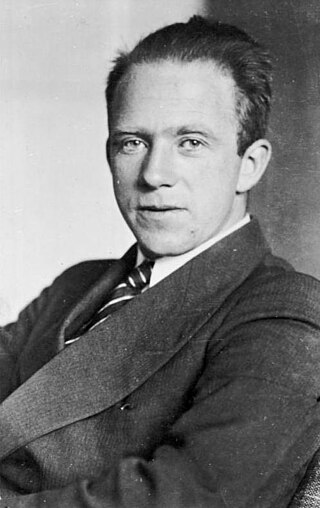
Werner Karl Heisenberg was a German theoretical physicist, one of the main pioneers of the theory of quantum mechanics, and a principal scientist in the Nazi nuclear weapons program during World War II. He published his Umdeutung paper in 1925, a major reinterpretation of old quantum theory. In the subsequent series of papers with Max Born and Pascual Jordan, during the same year, his matrix formulation of quantum mechanics was substantially elaborated. He is known for the uncertainty principle, which he published in 1927. Heisenberg was awarded the 1932 Nobel Prize in Physics "for the creation of quantum mechanics".
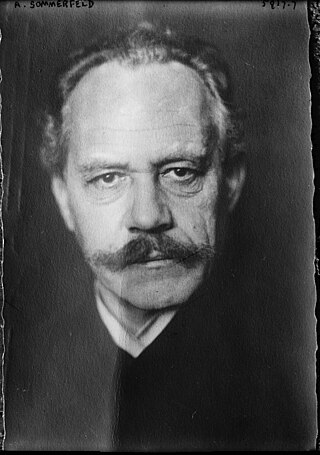
Arnold Johannes Wilhelm Sommerfeld, was a German theoretical physicist who pioneered developments in atomic and quantum physics, and also educated and mentored many students for the new era of theoretical physics. He served as doctoral supervisor and postdoc supervisor to seven Nobel Prize winners and supervised at least 30 other famous physicists and chemists. Only J. J. Thomson's record of mentorship offers a comparable list of high-achieving students.

Max Theodor Felix von Laue was a German physicist who received the Nobel Prize in Physics in 1914 for his discovery of the diffraction of X-rays by crystals.
Paul Peter Ewald, FRS was a German crystallographer and physicist, a pioneer of X-ray diffraction methods.
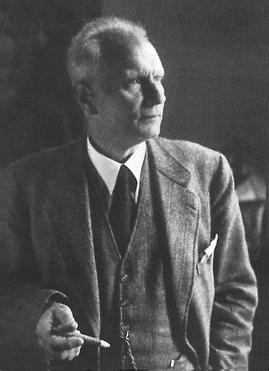
Walther Gerlach was a German physicist who co-discovered, through laboratory experiment, spin quantization in a magnetic field, the Stern–Gerlach effect. The experiment was conceived by Otto Stern in 1921 and successfully conducted first by Gerlach in early 1922.
Otto Laporte was a German-born American physicist who made contributions to quantum mechanics, electromagnetic wave propagation theory, spectroscopy, and fluid dynamics. His name is lent to the Laporte rule in spectroscopy and to the Otto Laporte Award of the American Physical Society.

Alfred Landé was a German-American physicist known for his contributions to quantum theory. He is responsible for the Landé g-factor and an explanation of the Zeeman effect.

LotharWolfgang Nordheim was a German born Jewish American theoretical physicist. He was a pioneer in the applications of quantum mechanics to solid-state problems, such as thermionic emission, work function of metals, field electron emission, rectification in metal-semiconductor contacts and electrical resistance in metals and alloys. He also worked in the mathematical foundations of quantum mechanics, cosmic rays and in nuclear physics.
Gregor Wentzel was a German physicist known for development of quantum mechanics. Wentzel, Hendrik Kramers, and Léon Brillouin developed the Wentzel–Kramers–Brillouin approximation in 1926. In his early years, he contributed to X-ray spectroscopy, but then broadened out to make contributions to quantum mechanics, quantum electrodynamics, superconductivity and meson theory.
Erwin Richard Fues, was a German theoretical physicist who made contributions to atomic physics and molecular physics, quantum wave mechanics, and solid-state physics.
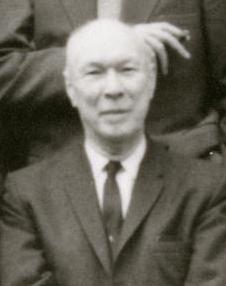
William Vermillion Houston was an American physicist who made contributions to spectroscopy, quantum mechanics, and solid-state physics as well as being a teacher and administrator. He became the second president of Rice University in 1946.
Edward Granville Ramberg was an American physicist who contributed to the early development of electron microscopy and color television. He was the uncle of Mario Capecchi, a 2007 Nobel laureate.
Friedrich Arnold "Fritz" Bopp was a German theoretical physicist who contributed to nuclear physics and quantum field theory. He worked at the Kaiser-Wilhelm Institut für Physik and with the Uranverein. He was a professor at the Ludwig Maximilian University of Munich and a President of the Deutsche Physikalische Gesellschaft. He signed the Göttingen Manifesto.
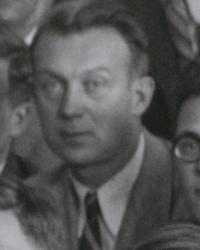
Hans Kopfermann was a German atomic and nuclear physicist. He devoted his entire career to spectroscopic investigations, and he did pioneering work in measuring nuclear spin. During World War II, he worked on the German nuclear energy project, also known as the Uranium Club.
Harrison McAllister Randall was an American physicist whose leadership from 1915 to 1941 brought the University of Michigan to international prominence in experimental and theoretical physics.

Magnesium monohydride is a molecular gas with formula MgH that exists at high temperatures, such as the atmospheres of the Sun and stars. It was originally known as magnesium hydride, although that name is now more commonly used when referring to the similar chemical magnesium dihydride.

Peter E. Toschek was a German experimental physicist who researched nuclear physics, quantum optics, and laser physics. He is known as a pioneer of laser spectroscopy and for the first demonstration of single trapped atoms (ions). He was a professor at Hamburg University.

Lectures on Theoretical Physics is a six-volume series of physics textbooks translated from Arnold Sommerfeld's classic German texts Vorlesungen über Theoretische Physik. The series includes the volumes Mechanics, Mechanics of Deformable Bodies, Electrodynamics, Optics, Thermodynamics and Statistical Mechanics, and Partial Differential Equations in Physics. Focusing on one subject each semester, the lectures formed a three-year cycle of courses that Sommerfeld repeatedly taught at the University of Munich for over thirty years. Sommerfeld's lectures were famous and he was held to be one of the greatest physics lecturers of his time.

Lucy Mensing, later Mensing-Schütz or Schütz, was a German physicist and a pioneer of quantum mechanics.













